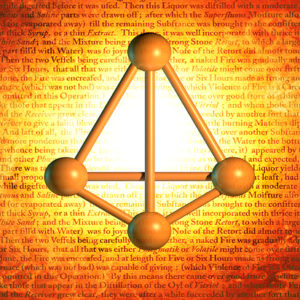 ABSTRACT –
ABSTRACT –
The Phosphorus individual is a tall, slender person of sanguine temperament, nervous, weak, delicate person who likes to be magnetised.1 A highly impressionable and imaginative person whose company makes others feel invigorated is –Phosphorus, is intensely sensitive to ‘other worlds’ and lacks the personal boundaries at every level.2 A Phosphorus personality is susceptible to all external impressions; light, sound, odour, touch, electrical changes, etc. Just like a match, he is easily excitable, anxious, fears being alone at twilight, ghosts, about future. Desires sympathy and has the tendency to kiss everyone who comes near him. An insane person with the exaggerated idea of one’s own importance.1
INTRODUCTION –
Phosphorus was introduced into homeopathy by Hahnemann, and the constitutional picture of Phosphorus was described by Kent in the 19th century. Before that a German philosopher Friedrich Nietzche, developed a theory that personality is dependent on the chemicals in the body. He believed that if Phosphorus was lacking, nervous exhaustion and depression would result. 2ThusPhosphorus, is one of the vivacious remedies, the ‘bright young thing’ which occupies an important position when one talks about personality and constitution.
PERSONALITY OF PHOSPHOROUS –
According to Constantine Hering, Phosphorus is –
Excitable, easily angered, vehement due to which he suffers afterwards. Anxious, filled with gloomy forebodings as if about to die, about termination of his illness, and restless at twilight, when alone, about the future, during a thunderstorm, with palpitation. Fear and dreads in evening of death, as if something creeping out of every corner. Apathetic, indifferent even to his own children, answers no questions, or replies wrongly, takes no notice of things around him. But his responses are always correct, answers slowly, moves sluggishly. Seems dumb and dazed for many days.3
According to J.T. Kent, Phosphorus arise in –
Feeble constitutions such as have been sick, slender and grown too rapidly, or who are rapidly emaciating. In persons who are vehement, irascible. Internally, he is in a turmoil. Very sensitive to all external impressions, slight odours, noises, touch. The patient wants to be rubbed and always want to rest. Undergoes great excitement. Tremulousness, wild thoughts and excitability keeps him awake at night. Violent imagination, excitability even to ecstasy and clairvoyance, anxiety, gloomy forebodings. Fears that something will happen, apprehensiveness. On borderland of insanity, dejected, a most marked case of hypochondriasis. Weeping, sad, hysterical, violent, loquacious, delirium. Everything looks dark, he is weary of life, gloomy and says nothing. Amelioration by eating.4
According to William Boericke, Phosphorus is–
A great lowness of spirits, easily vexed, fearfulness, as if something is creeping out of every corner, clairvoyant state, great tendency to start, oversensitive to external impressions, loss of memory, ecstasy, dread of death when alone, insanity, with exaggerated idea of one’s own importance. Excitable, restless, fidgety, hyposensitive, indifferent.5
According to E.B. Nash, Phosphorus is –
A tall, slender, narrow-chested, phthisical patient, delicate eyelashes, soft hair, or nervous, weak person who likes to be magnetised. Anxious, universal restless, can’t stand or sit still. Apathetic, unwilling to talk, answers slowly, moves sluggishly.6
According to E.A. Farrington, Phosphorus is –
Sad at twilight, alternate laughter and crying. Easily angered, trembling, hot afterwards, indifferent, anxiety, as if about to die.7
According to J.H. Clarke, Phosphorus has –
Amativeness, dizziness of mind, nymphomania, melancholy, sadness, violent weeping, interrupted by fits of involuntary laughter, laughs at serious things, loquacious, anguish and uneasiness, especially when alone, or in stormy weather with timorousness and fright. Great apathy, sluggish, dislike to talk, hypochondriacal sadness, disgust to life, easily vexed and angry. Repugnance to labour. Flow of ill-assorted ideas, state of clairvoyance, ecstasy, zoomagnetic condition.8
CONCLUSION –
Phosphorus is an immensely important remedy in homeopathy, one of the desert island remedies. One who is gentle and affectionate and also dangerous and destructive on the contrary.2 So, whenever you see a ‘Social Butterfly’ who is emotionally immature, think of Phosphorus.
REFERENCES –
- Phatak SR. Materia Medica of Homoeopathic Medicines. New Delhi: Indian Books and Periodicals Publishers; reprint edition 2000. p. 461.
- https://www.britishhomeopathic.org/charity/how-we-canhelp/articles/homeopathic-medicines/p/phosphorus/
- Hering C. The Guiding symptoms of our Materia Medica. New Delhi: B.Jain Publishers Pvt. Ltd; Reprint edition 1995. vol7: p.330-331.
- Kent JT. Lectures on Homoeopathic Materia Medica, together with Kent’s “New Remedies” incorporated and arranged in alphabetical order. New Delhi: B. Jain Publishers Pvt. Ltd; Low priced edition2002. p. 824-836.
- Boericke W. New Manual of Homoeopathic Materia Medica with Repertory, Third revised and augmented edition, based on ninth edition. New Delhi: B. Jain Publishers Pvt. Ltd; 2007. p. 450-454.
- Nash EB. Leaders in Homoeopathic Therapeutics with grouping and classification. New Delhi: B Jain Publishers Pvt. Ltd; Reprint edition 2004.p. 190-191.
- Farrington EA. Comparative Materia Medica. New Delhi: B.Jain Publishers Pvt. Ltd; Reprint edition 1996.p.237.
- Clarke JH. A Dictionary of Practical Materia Medica. New Delhi: B Jain Publishers Pvt. Ltd; Reprint edition 1996. vol 3.





